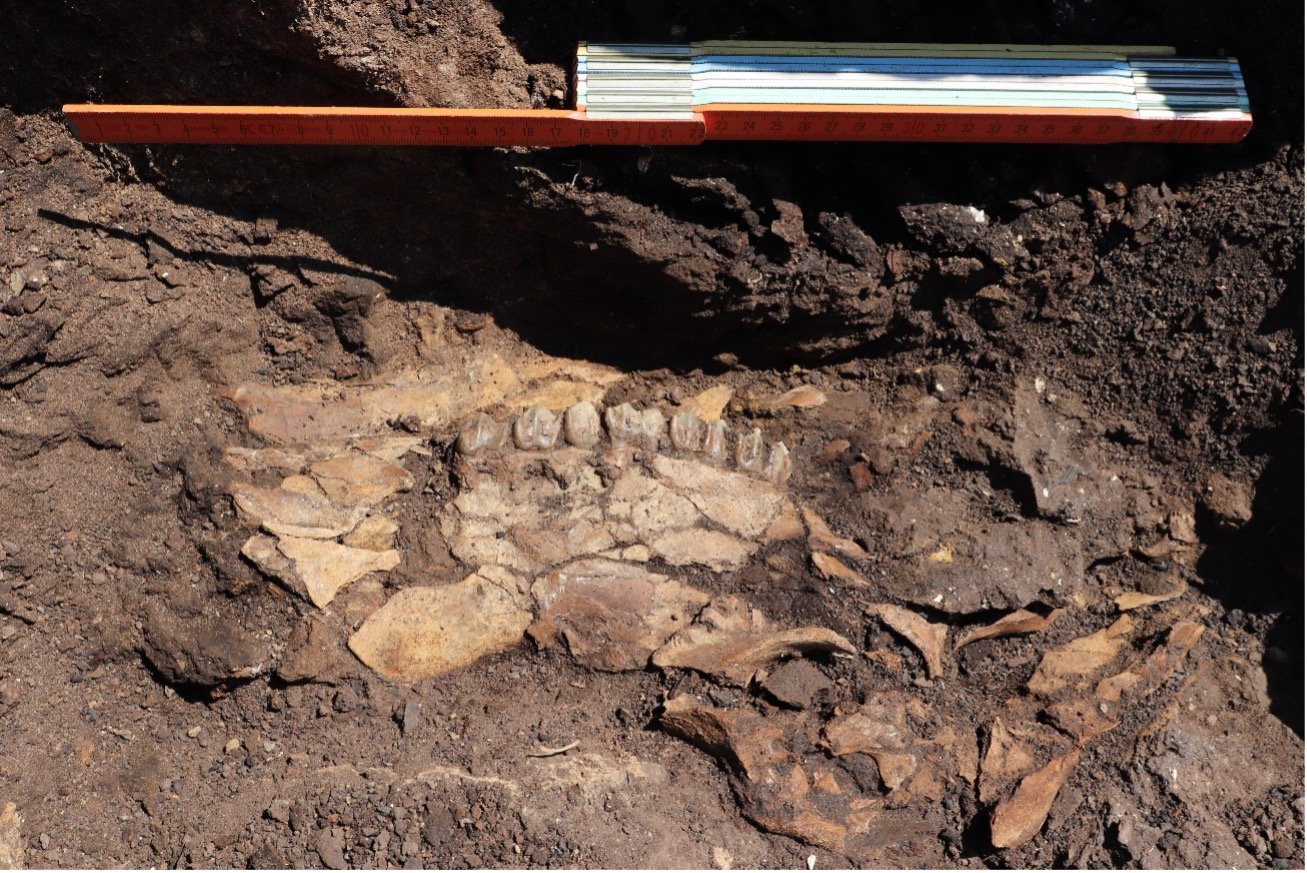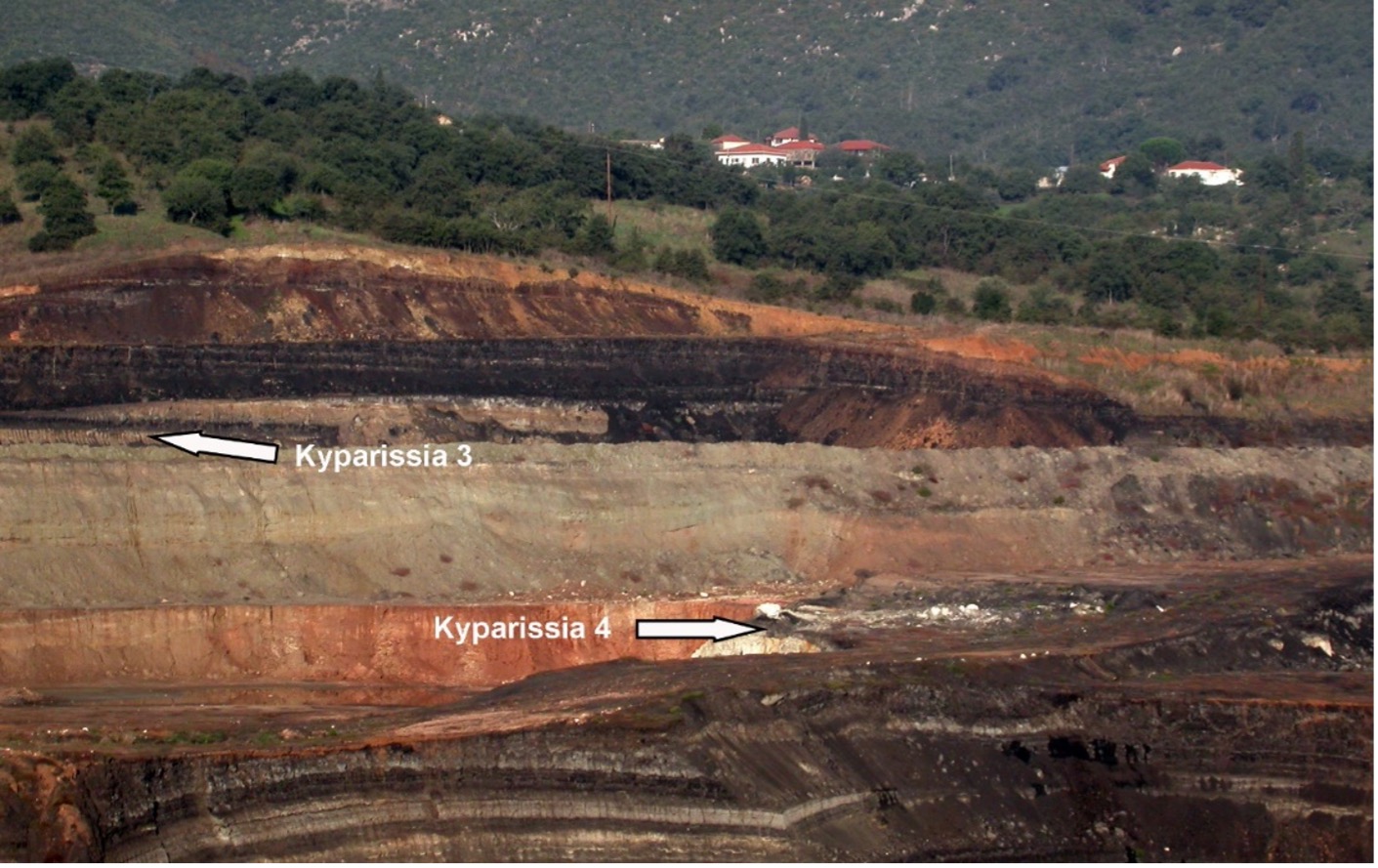
Several paleolithic sites dating from 700 thousand years ago have been discovered during excavations at the Megalopolis lignite mine, in Arcadia, southern Greece.
According to a statement by the Greek Ministry of Culture on Thursday the sites “offer a unique opportunity to investigate human behavior over time, for an important period in the history of human evolution and in an area that has so far been little investigated.”
The oldest location identified is Kyparissia 4, which dates back to about 700 thousand years ago and is located about 70 meters below the surface.
The site contains Paleolithic stone artifacts, along with the remains of extinct animals such as giant deer (Praemegaceros), hippopotamus, rhinoceros, elephant, and a tooth of the macaque monkey.
The “younger” nearby site Kyparissia 3 yielded mainly elephant bones associated with stone tools. At the Marathousa 2 site, which dates back to about 450 thousand years ago, a part of a hippopotamus skeleton with cut marks was found together with the remains of stone tools, and is a rare example of hippopotamus exploitation in Pleistocene Europe.
The Pleistocene, often referred to colloquially as the Ice Age, is the geological epoch that lasted from c. 2.58 million to 11,700 years ago, spanning the Earth’s most recent period of repeated glaciations.
Stone tools and bone fragments at the Paleolithic sites of Greece

According to the Greek Ministry of Culture of great importance is the discovery of Tripotamos 4 site, which is approximately 15 meters below the current surface.
The site dates to about 400 thousand years and is characterized by a relatively large concentration of stone tools, which present new elements in stone working techniques compared to older sites, making the site an important point in the technological developments of the late Lower Paleolithic.
The Choremi 7 site was found in the upper part of the geological sequence, about 8 meters below the current surface and dates back to about 280 thousand years. The stone carving of the site includes typological and technological characteristics of the Middle Paleolithic.
The faunal assemblage of the site consists mainly of bone fragments of deer, some of which bear traces of human processing.

The preliminary study of the paleoenvironmental and paleoclimatic indicators shows that all the sites have been found in ice age environments, and in fact, they are located chronologically in almost all the ice ages of the Middle Pleistocene.
These findings indicate that the Megalopolis basin formed one of the southernmost ecological refuges in Europe during the glacial periods, the Greek Ministry says.
Related: The Prehistoric ‘Human Skull’ Cave of Greece
See all the latest news from Greece and the world at Greekreporter.com. Contact our newsroom to report an update or send your story, photos and videos. Follow GR on Google News and subscribe here to our daily email!



